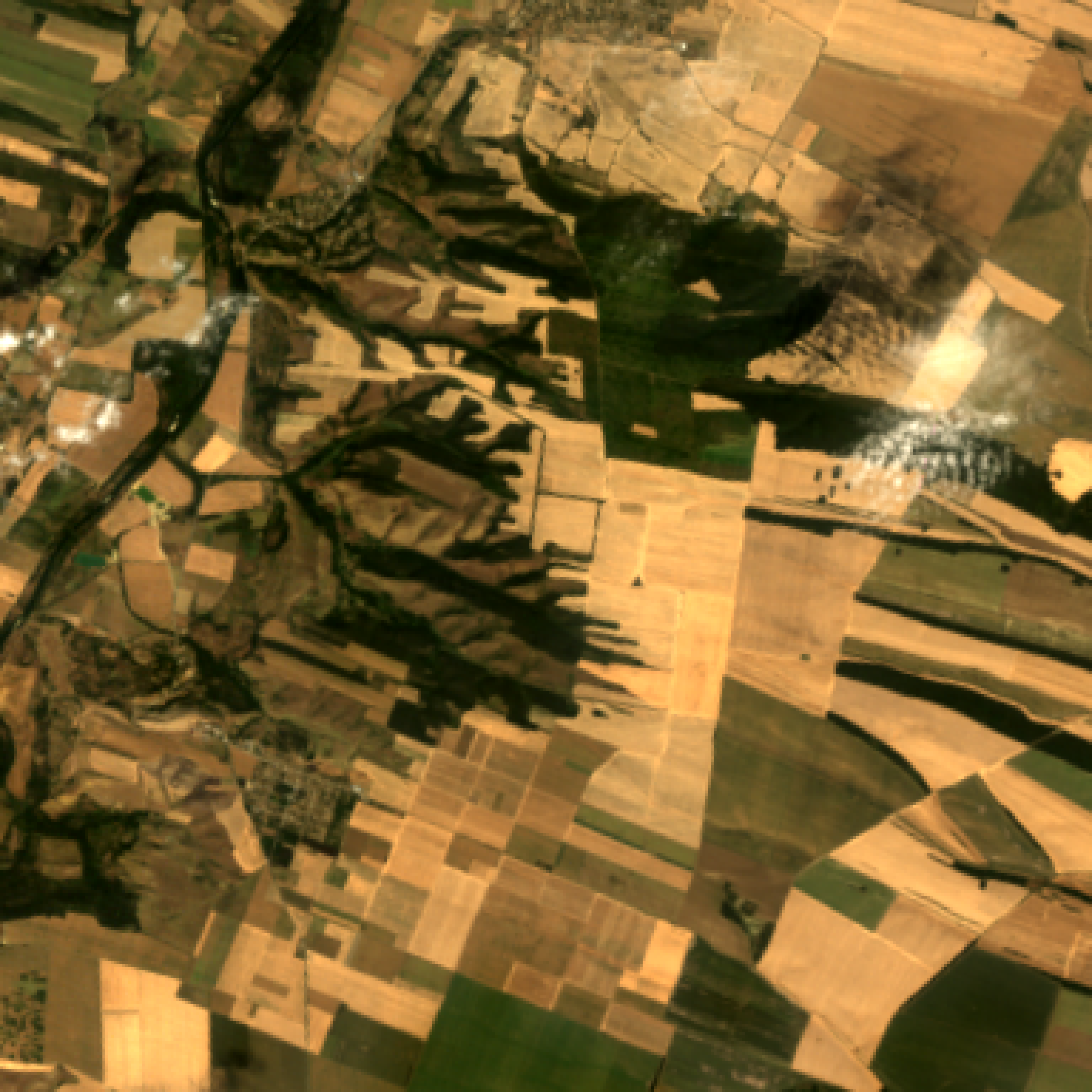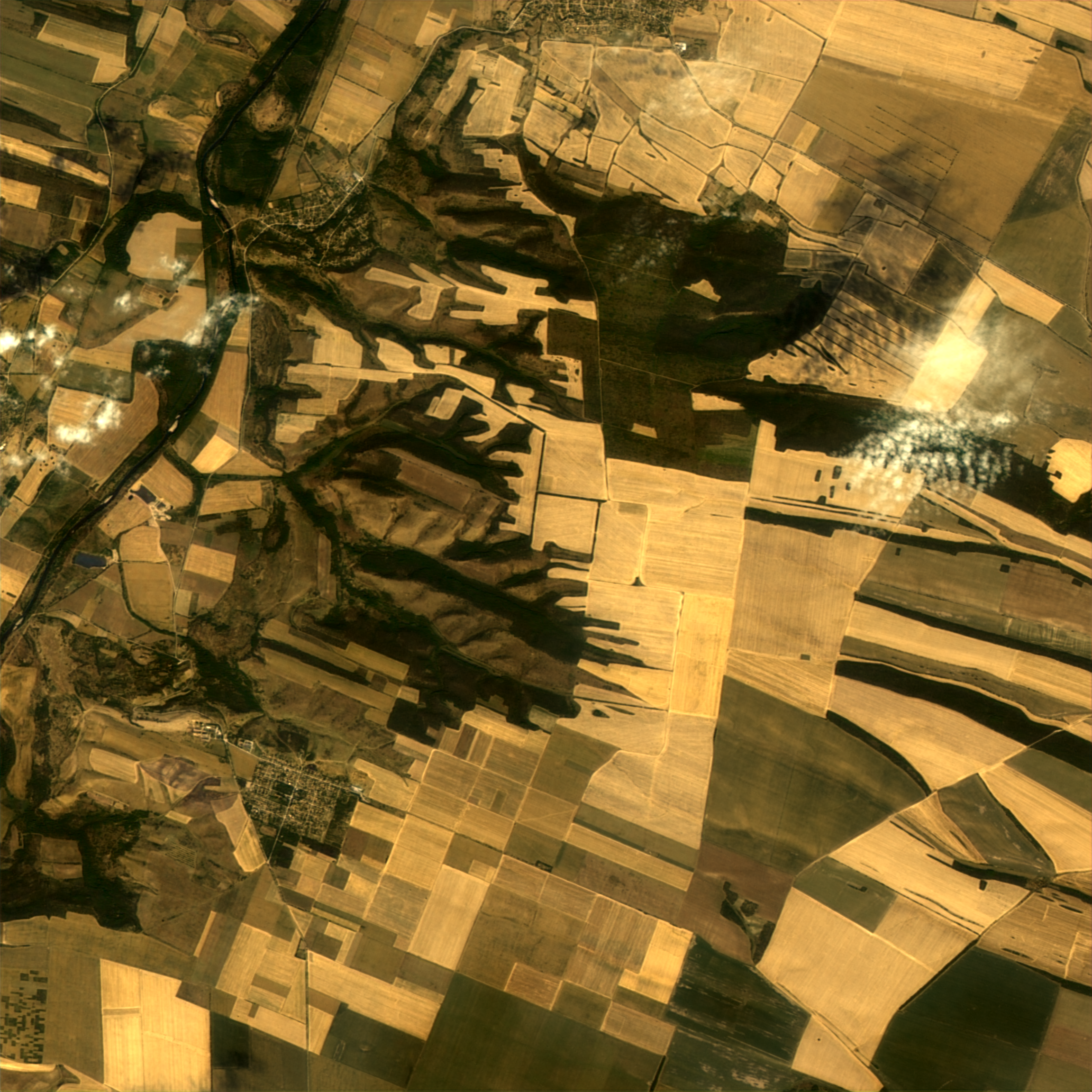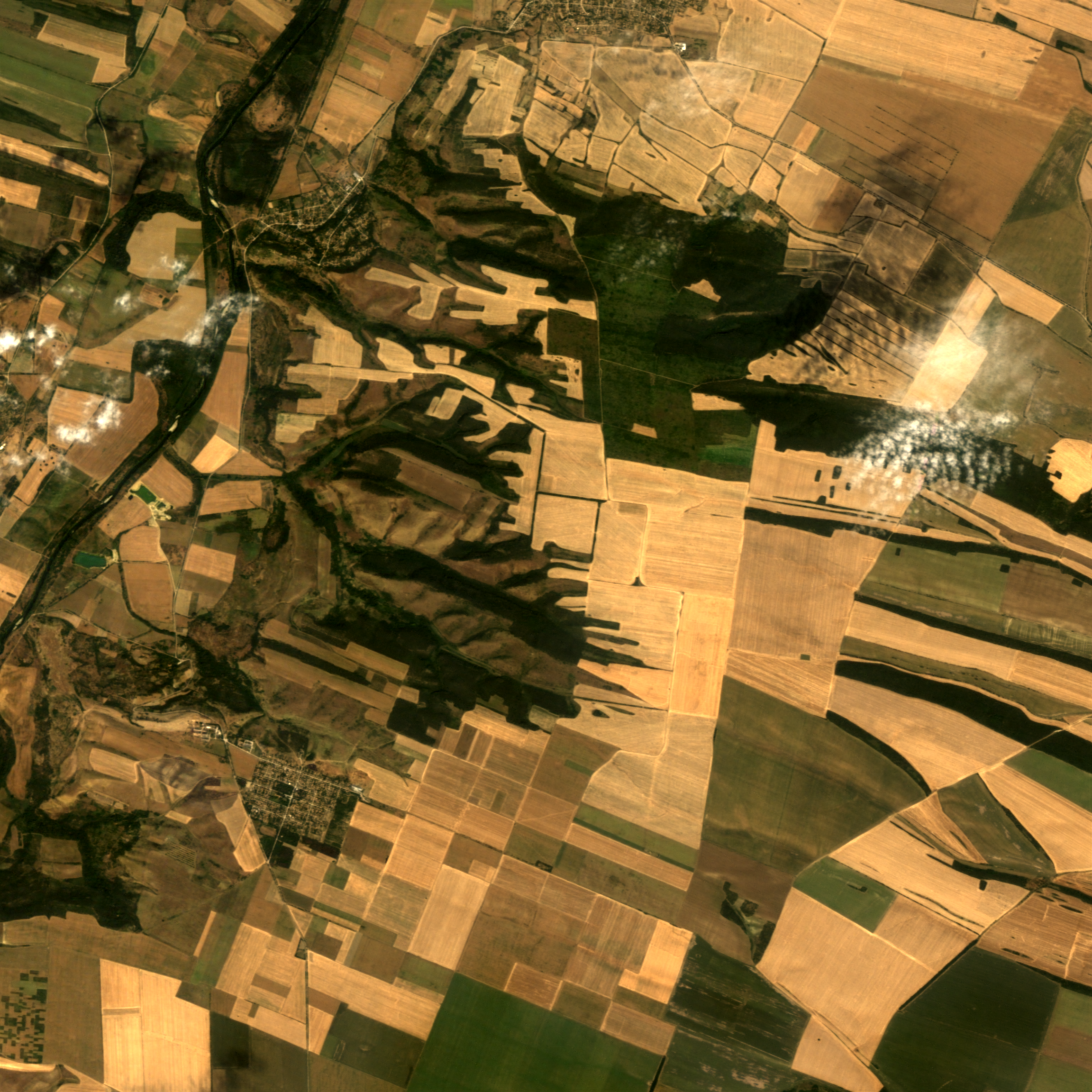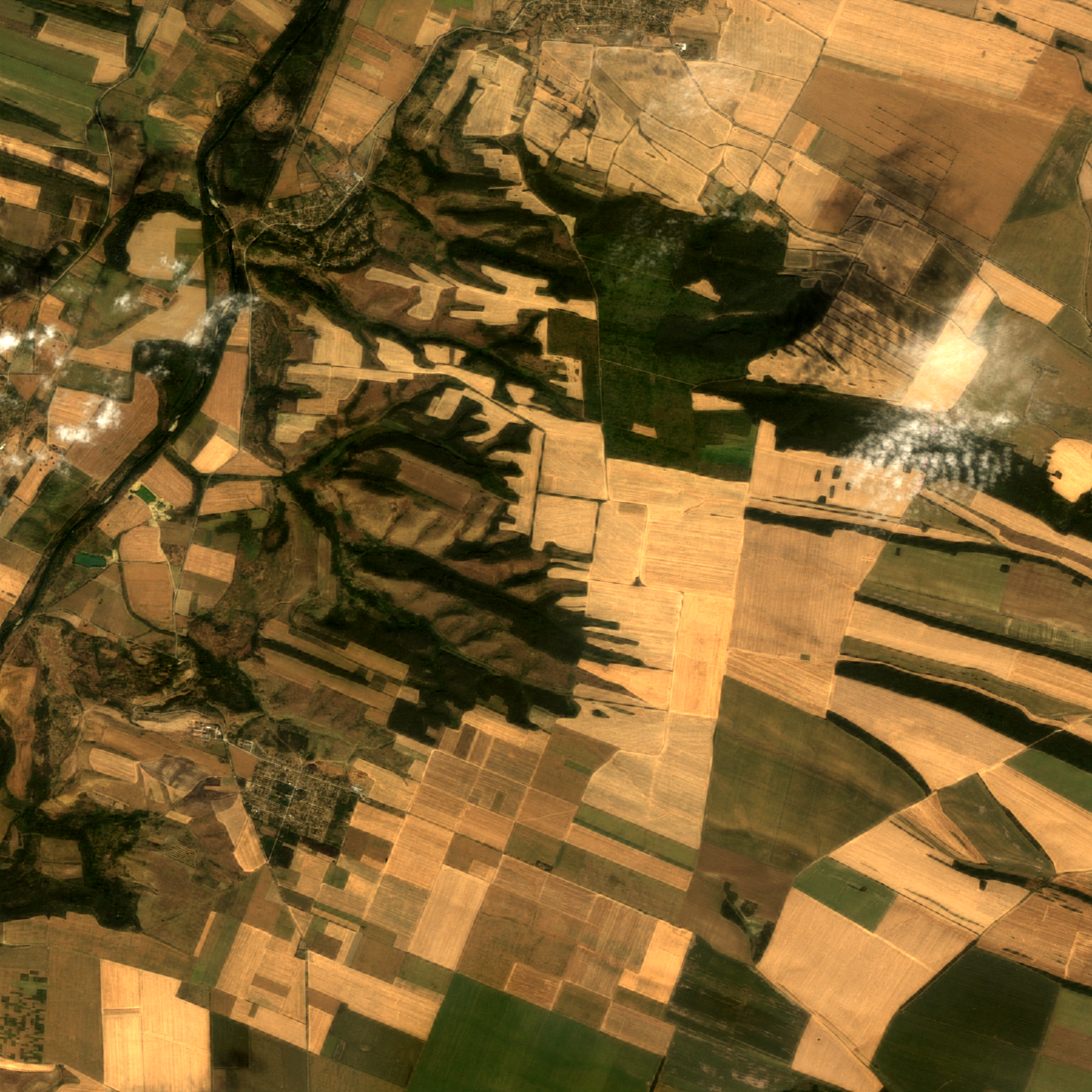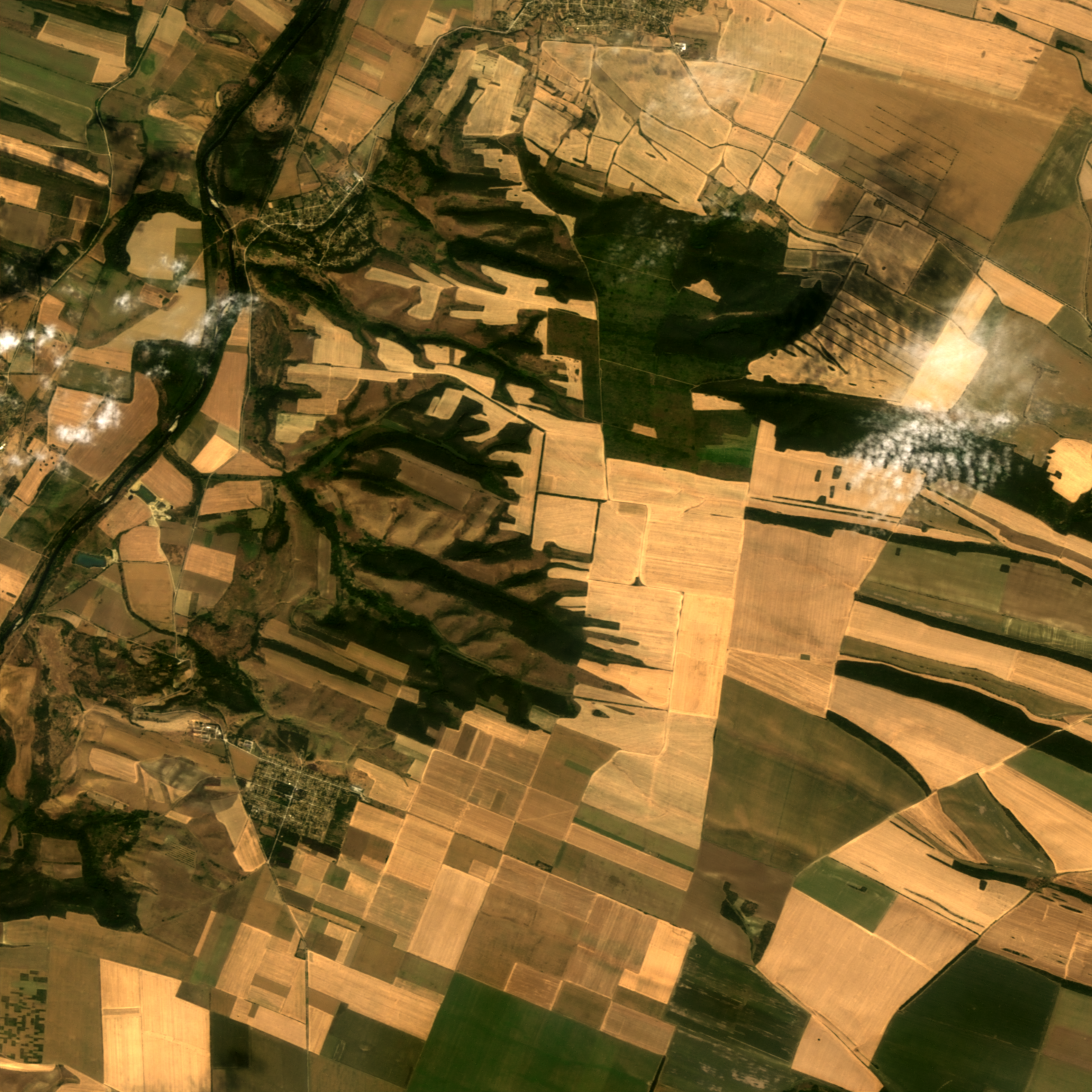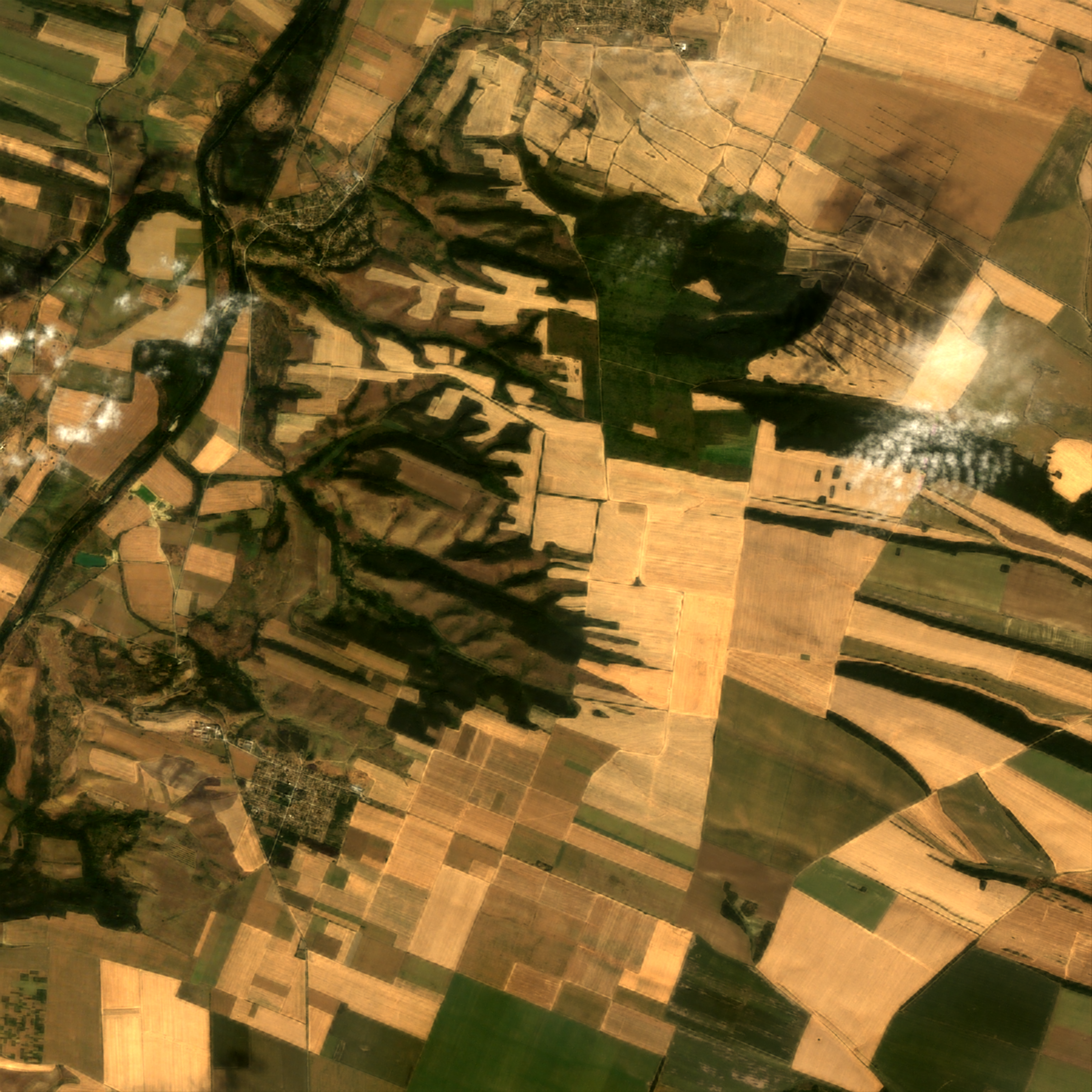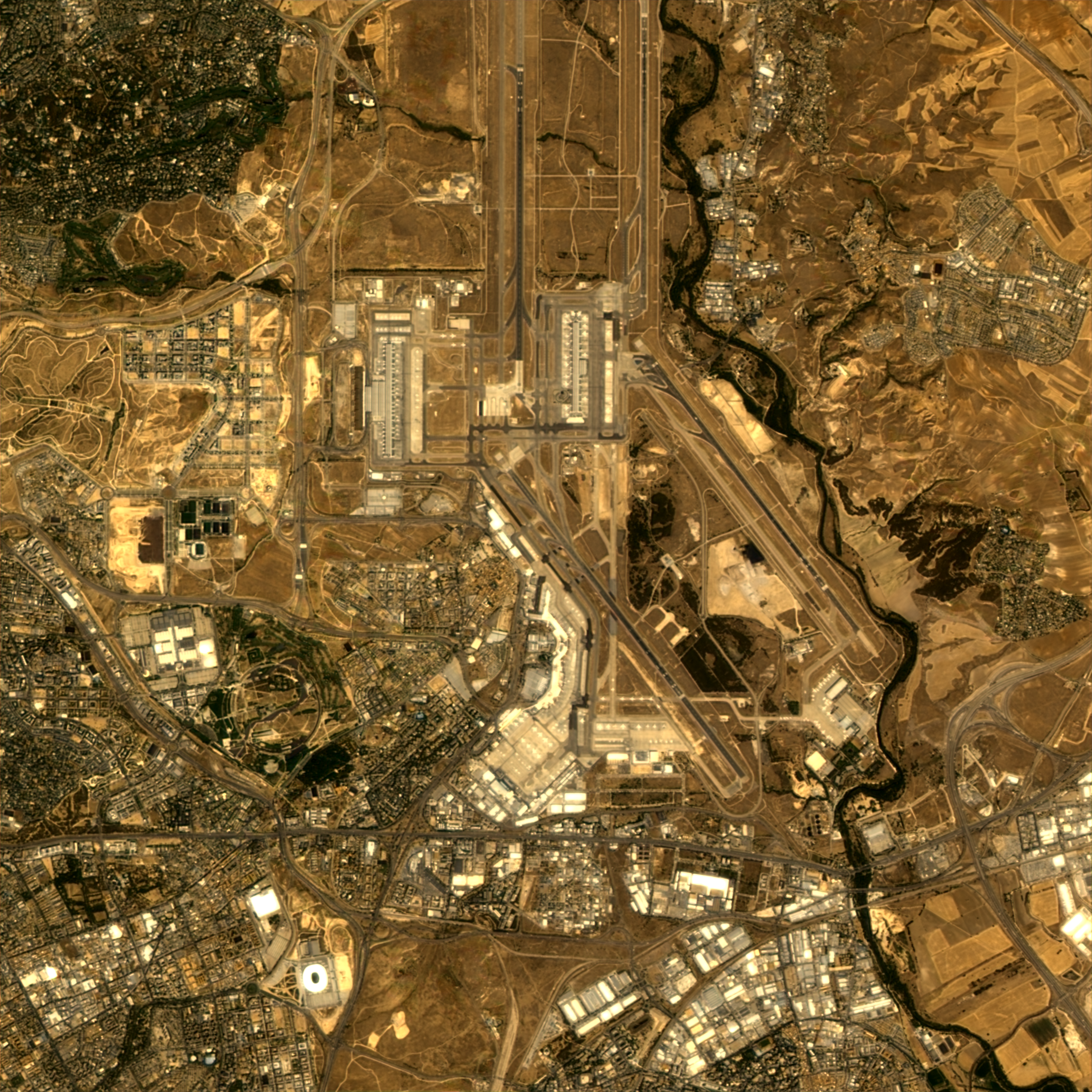- a new large-scale dataset covering 262200 km2 for qualitative assessment of deep neural models for hyperspectral image pansharpening. Such dataset is collected from the PRISMA satellite, preprocessed and adopted for the retraining of current state-of-the-art approaches for image pansharpening;
- an in-depth comparison, both in quantitative and qualitative terms, of the current deep learning based approaches, re-trained and tested on the newly proposed large scale dataset, and traditional machine-learning-free approaches.

|
|
|
Quantitative Comparison
| Method | # of parameters (M) | ERGAS ↓ | SAM ↓ | SCC ↑ | Q2n ↑ |
|---|---|---|---|---|---|
| PCA (Chavez et al., 1991) | - | 8.9545 | 4.8613 | 0.6414 | 0.6071 |
| GSA (Aiazzi et al., 2007) | - | 7.9682 | 4.3499 | 0.6642 | 0.6686 |
| HySure (Simoes et al., 2014) | - | 8.3699 | 4.8709 | 0.5832 | 0.561 |
| PNN (Masi et al., 2016) | 0.08 | 12.884 | 3.8465 | 0.8237 | 0.6702 |
| PanNet (Yang et al., 2017) | 0.19 | 6.7062 | 2.7951 | 0.8705 | 0.7659 |
| MSDCNN (Yuan et al., 2018) | 0.19 | 9.9105 | 3.0733 | 0.8727 | 0.7537 |
| TFNet (Liu et al., 2020) | 2.36 | 6.409 | 2.4644 | 0.8875 | 0.7897 |
| SRPPNN (Cai and Huang, 2020) | 1.83 | 6.4702 | 2.3823 | 0.889 | 0.7708 |
| DIPNet(Xie et al., 2021) | 2.95 | 5.183 | 2.3715 | 0.8721 | 0.7929 |
| Method | # of parameters (M) | Dkλ ↓ | D∗s ↓ | QNR ↑ |
|---|---|---|---|---|
| PCA (Chavez et al., 1991) | - | 0.9411 | 1.5277 | 0.0558 |
| GSA (Aiazzi et al., 2007) | - | 0.382 | 0.0016 | 0.617 |
| HySure (Simoes et al., 2014) | - | 0.4151 | 0.0009 | 0.5843 |
| PNN (Masi et al., 2016) | 0.08 | 0.3801 | 0.0101 | 0.6136 |
| PanNet (Yang et al., 2017) | 0.19 | 0.3507 | 0.0203 | 0.636 |
| MSDCNN (Yuan et al., 2018) | 0.19 | 0.3915 | 0.0068 | 0.6044 |
| TFNet (Liu et al., 2020) | 2.36 | 0.3552 | 0.0066 | 0.6405 |
| SRPPNN (Cai and Huang, 2020) | 1.83 | 0.3948 | 0.0139 | 0.5965 |
| DIPNet(Xie et al., 2021) | 2.95 | 0.3681 | 0.0348 | 0.6098 |
Qualitative Comparison
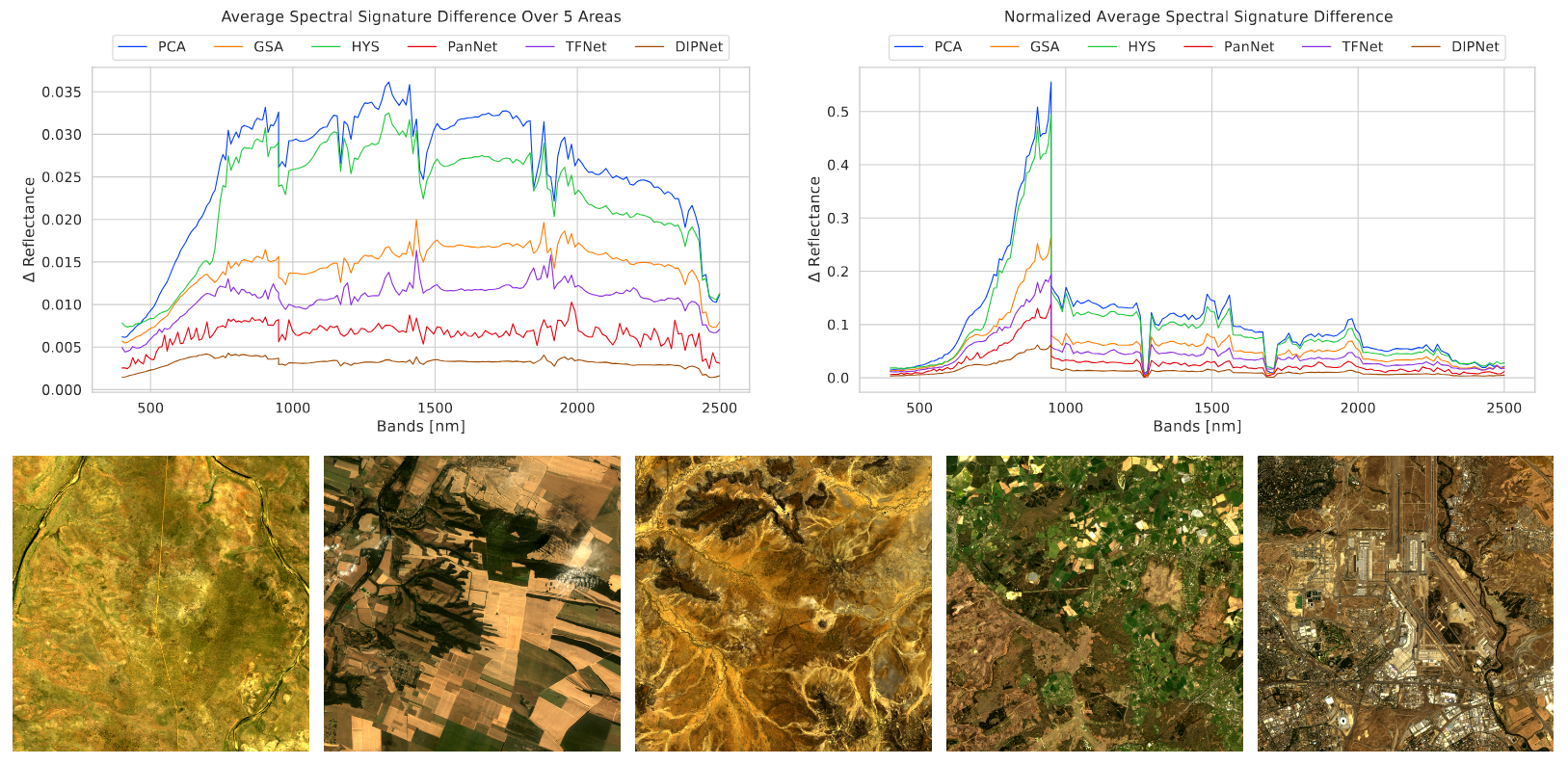
|
|
|
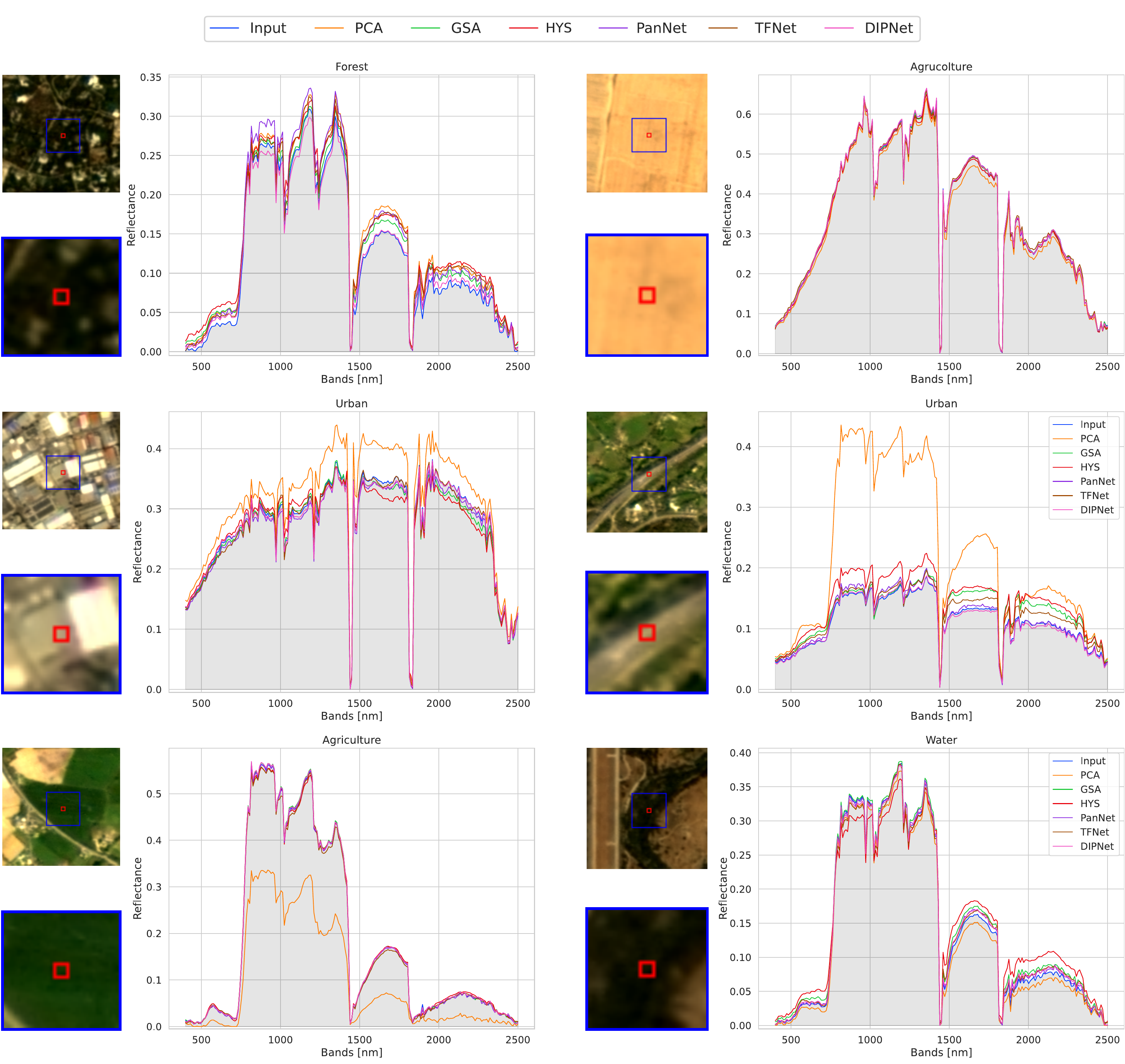
|
|
|
Methods results (click on image to open at full resolution)
BibTeX
@misc{zini2023deep,
title={Deep Learning Hyperspectral Pansharpening on large scale PRISMA dataset},
author={Simone Zini and Mirko Paolo Barbato and Flavio Piccoli and Paolo Napoletano},
year={2023},
eprint={2307.11666},
archivePrefix={arXiv},
primaryClass={eess.IV}
}

